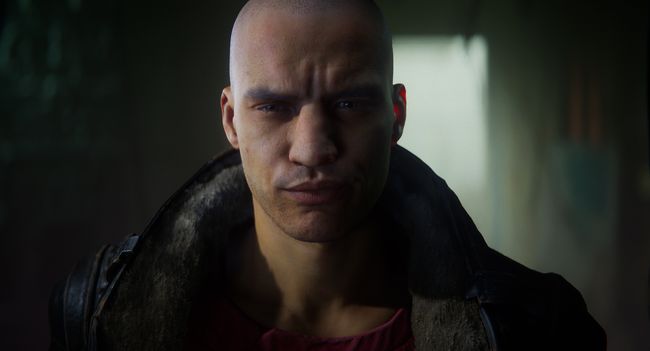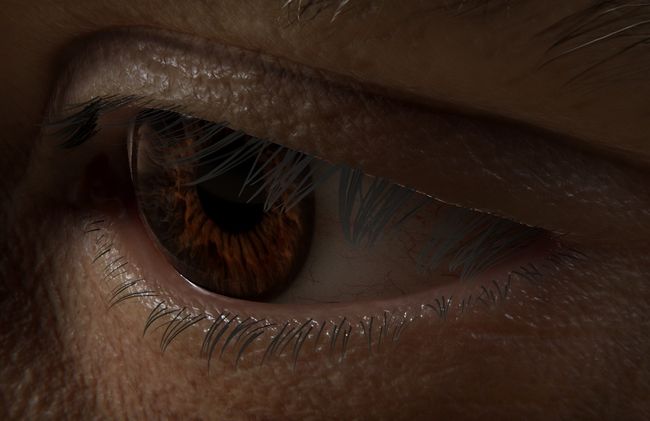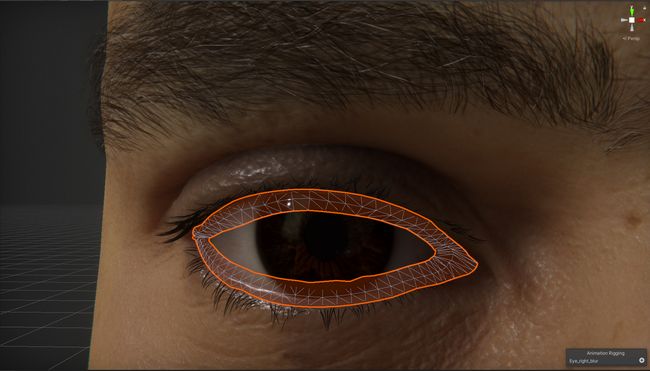异端的制作:数字人物Gawain
Gawain is the main character from The Heretic, the real time short film made in Unity, written and directed by Veselin Efremov. This article will cover the creation of the character and give some insight into the different aspects of his production.
高文 ( Vawalin Efremov) 执导的 《异端》 ( The Heretic )是Unity制作的实时短片 。 本文将介绍角色的创作,并对他的作品的不同方面有所了解。
铸造与生产 (Casting and Production)
We worked with a casting agency to choose the actor who would perform the role. This was the first digital role for actor Jake Fairbrother. You can normally see him in theatrical plays in London.
我们与演员公司合作,选择了扮演角色的演员。 这是演员 杰克·费尔伯瑟特 ( Jake Fairbrother )的第一个数字角色 。 通常您可以在伦敦的戏剧中看到他。
The performance took place on several separate occasions. We started with a body scan at 4D Max , together with a 3D scan of the face and a first batch of 4D performance at Infinite Realities at their studio outside of London. We continued with capturing body performance at our mocap studio in Sofia, and later returned to Infinite Realities for additional 4D performance when we knew that we could scale the amount of screen time it is viable for. Voice performance was captured at SideUK studio in London.
演出在几个不同的场合进行。 我们首先从 4D Max 进行人体扫描, 再到 在伦敦郊外的 Infinite Realities 进行 3D面部扫描和首批4D表演 。 我们继续在索非亚的Mocap工作室捕捉人体表现,然后在得知我们可以扩展可行的屏幕显示时间后,回到Infinite Realities获得4D表现。 语音性能 在伦敦的 SideUK 工作室 拍摄 。
概念艺术 (Concept Art)
The project started with some early concept explorations by Georgi Simeonov. He tried different styles based on his initial discussions with Director Veselin Efremov, with some elements that were essential to the story, like the briefcase for example, being present in almost all of the versions.
该项目始于Georgi Simeonov的一些早期概念探索。 在与导演Veselin Efremov进行初步讨论的基础上,他尝试了不同的风格,其中一些对于故事至关重要的元素(例如公文包)几乎出现在所有版本中。
In the second stage, some of the ideas from the initial exploration were developed further and became more focused after Georgi and Veselin discussed what was working from the previous sketches. One thing that is interesting to note here is the subtle implementation of the medieval knight theme in the design of Gawain’s costume.
在第二阶段中,Georgi和Veselin讨论了先前草图中的工作之后,最初的探索中的一些想法得到了进一步发展,并变得更加集中。 在这里需要注意的一件事是在Gawain服装的设计中巧妙地实现了中世纪骑士主题。
The final version of the concept sketch for Gawain. Some things changed as we moved along, but we tried to stay as close as possible to the original design.
Gawain概念草图的最终版本。 随着我们的前进,有些事情发生了变化,但是我们试图保持与原始设计尽可能的接近。
头 (Head)
Paco: After we received the initial scan and the cleaned neutral pose of the face from Infinite Realities, we had a meeting with our animation director Krasimir Nechevski to figure out some of the technical details that we needed to clear up before continuing with the outfit and animations, things like the uv layouts for the face, the different texture sets and how and where we split those, also choosing where to split the head from the body. This last one was especially important as the director Veselin made it clear from the beginning that he wanted to see as much of the neck and the area around it as possible in the closeups that he was planning with the 4D capture of the actor’s performance.
Paco :在收到 Infinite Realities 的初始扫描和清洁的面部中性姿势后 ,我们与动画总监Krasimir Nechevski进行了会面,以弄清在继续使用服装前需要清除的一些技术细节。动画,面部的uv布局,不同的纹理集以及如何以及在何处分割这些东西,还可以选择从身体分割头部的位置。 这最后一个尤为重要,因为导演Veselin从一开始就明确表示,他希望在他计划以演员的表演进行4D捕捉的特写镜头中看到尽可能多的脖子和周围区域。
We had to be carefull with the distribution of the textures sets also because they had different resolutions, for example the body and legs had a much lower resolution compared to the face, mostly because we don’t see them pretty much anywhere, but we choose to have them just in case. After all of that was decided on, we transferred and tweaked the scanned data onto the new model and made some adjustments as we moved forward.
我们必须谨慎处理纹理集的分布,还因为它们具有不同的分辨率,例如,身体和腿部的分辨率比面部低得多,主要是因为我们在任何地方都看不到它们,但是我们选择以防万一。 在所有这些决定之后,我们将扫描的数据传输并调整到新模型上,并随着前进而进行一些调整。
眼睛 (Eyes)
The eyes went through a lot of polishes and tweaks to get to where we needed them to be, a lot of that creative guidance and drive came through the director Vess, who served as a reality check on what could be improved with them.
视线经过了许多磨合和调整,以到达我们需要的位置,其中很多创意指导和驱动力来自导演Vess,他实地考察了使用它们可以改善的地方。
The tech for the eyes was made by Lasse Pedersen with some help from Nicolas Brancaccio. The eyes used a single mesh for the cornea, iris and sclera, the shader controlled many features related to the eyes directly inside of Unity. We also had a mesh around the eyelids controlling the smoothing of the normals between the eyeball and the eyelids to give us a softer transition, it also served as a tearline mesh.
Lasse Pedersen在 Nicolas Brancaccio的 帮助下,制造了用于眼睛的技术 。 眼睛为角膜,虹膜和巩膜使用了单个网格,着色器直接在Unity内部控制与眼睛相关的许多功能。 我们在眼睑周围也有一个网格,控制眼球和眼睑之间法线的平滑度,使我们的过渡更柔和,它还可以用作泪线网格。
An example of some of the controls that the shader gave us, in this case the AO of the eyes instead of having to use a separate shadow mesh for that with a baked texture.
着色器提供给我们的一些控件的示例,在这种情况下为眼睛的AO,而对于具有烘焙纹理的蒙版则不必使用单独的阴影网格。
牙齿 (Teeth)
For the teeth Lasse Pe





